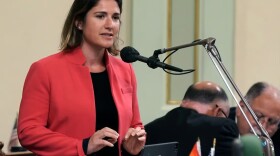UC San Diego’s effort to track COVID-19 in sewage already identified two people who were carrying the virus.
The university began testing sewage pipes for traces of the coronavirus earlier this year. Researchers, led by the team working in Rob Knight’s lab, detected the virus in a sewage pipe connected to dorms and labs a couple of weeks ago.
“UCSD was able to get in touch with about 700 people in the next day-and-a-half. They were all tested,” said Robert Schooley, a professor of Medicine at UCSD. “We found two people who were without symptoms who were shedding viral RNA from their noses. So we found two infected people from this signature in the water pipe that we wouldn’t have known about if we hadn’t been doing the water pipe testing.”
RELATED: Coronavirus Has Reduced Air Pollution, But Not The Risk In Some San Diego Communities
The pair were isolated until they were no longer infectious.
Researchers look for fragments of the virus in the wastewater. If they find it, they move quickly to test people who spend time in the buildings.
“RNA or DNA, depending on the organism, is a great signature that tells you the organism has been nearby or in the region. It doesn’t tell you whether something is living, or able to replicate and grow,” Schooley said.
RELATED: Some Prominent UCSD Faculty Want County To Slow Business Reopening
UCSD hopes says the wastewater testing will continue to be used so school officials can help locate outbreaks as more people return to school.







